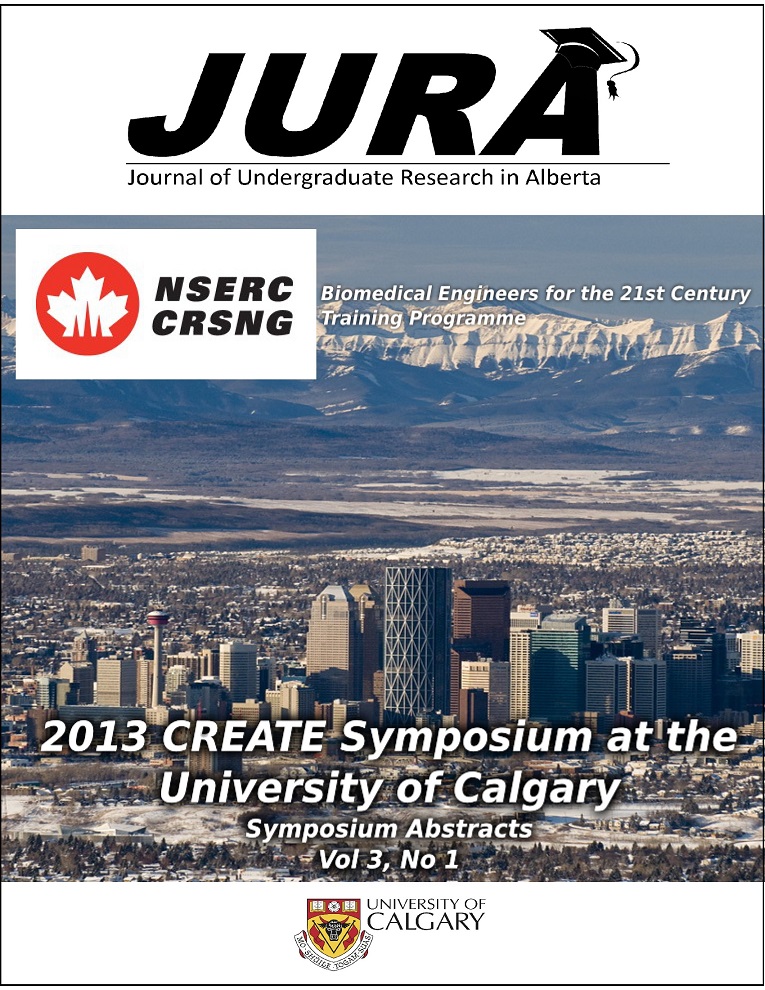Cerebral infarct volume change over time In ischemic stroke
Abstract
Cerebral Infarct Volume Change Over Time In Ischemic Stroke
Mark Krongold1,2,4, Armin Eilaghi1,2,3,4, Mohammed Almekhalfi1,2, Andrew Demchuk1,2, Richard Frayne1,2,3,4
1Department of Radiology and Clinical Neuroscience, University of Calgary, 2Hotchkiss Brain Institute, University of Calgary, 3Department of Electrical and Computer Engineering, University of Calgary. 4Seaman Family MR Research Centre
markkrongold@gmail.com
INTRODUCTION
Stroke is the second leading cause of death worldwide[1]. Ischemic strokes account for 80% of stroke events and occur due to blood clots which interrupt the flow of blood into the brain. Interruption of blood flow causes a lack of oxygen and nutrients in the brain which leads to a loss of brain function and the build up of infarct tissue[1]. This build up is a dynamic process in which stroke volume changes over time. Stroke evolution is characterized by two types of edema. Cytotoxic edema (imaged using DWI[2]) occurs acutely and causes the build up of fluid intracellularly [3] while vasogenic edema (imaged using FLAIR[4]) occurs due to the breakdown of the blood brain barrier or CSF barrier and is prolonged [5].
Imaging of subjects in clinical trials of stroke is done over periods of time of up to 90 days. Long time periods not only lead to a decrease of patients who follow up in the studies but allows for events such as trauma, secondary stroke, or even death to confound the data acquired. Evidence has shown that stroke volume 90 days post infarct is not significantly different than 30 days post infarct suggesting that stroke volume plateaus at the 30 day mark[6]. The purpose of this research was to study infarct volume evolution and determine if MR imaging at early time points can be used to predict final infarct volume. This would not only increase the number of patients that can be analyzed in clinical trials but help in earlier stroke management and treatment decision making.
METHODS
This is a retrospective study of patients who had strokes with DWI done at baseline and 2 or more FLAIR imaging sessions post baseline (either around 12 hours, 24 hours, 5 days, 30 days, or 90 days). Infarct tissue was traced using Cerebra and MIPAV software and confirmed by a neuroradiologist. Statistical analysis was done using one way ANOVA and correlation coefficients.
RESULTS
It was determined that infarct volumes at the 24 hour and 5-day time points were significantly different than volumes at baseline. Significant difference were also found between the 5-day and final (30+90day) time points. Correlation analysis indicated a strong positive correlation between stroke volume at the 5-day vs final time points in patients (Figure 1).
Figure 1. Regression lines of final lesion volume (mL) plotted against the 5-day volume (mL) in subjects. Analysis determined a correlation coefficient of 0.884 (n=51).
DISCUSSION AND CONCLUSIONS
The results of this study suggest that vasogenic edema affects patients significantly between the acute and prolonged stage, increasing lesion volume until a peak is reached at around 5 days. A strong correlation between the 5-day and final volumes in patients suggests that more vasogenic edema at 5 days correlates to increased overall neuronal damage in the patient. The research shows that approximations of final outcome can be determined at earlier time points leading to a reduced need of subjects coming back in clinical trials, inclusion of more subjects in trial analysis, and quicker decision making in the stroke management process.
REFERENCES
- Donnan GA, et al. Lancet. 371:1612-1623, 2008.
- Schaefer PW, et al. Stroke. 28:1082-1085, 1997.
- Liang D, et al. Neurosurg Focus. 22:E2, 2007.
- Brant-Zawadzki M, et al. Stroke. 27:1187-1191, 1996.
- Rosenberg GA & Yang Y. Neurosurg Focus. 22:1-9, 2007.
- Gaudinski MR, et al. Stroke. 39:2765-2768, 2008.
Downloads
Downloads
Additional Files
Published
Issue
Section
License
Authors retain all rights to their research work. Articles may be submitted to and accepted in other journals subsequent to publishing in JURA. Our only condition is that articles cannot be used in another undergraduate journal. Authors must be aware, however, that professional journals may refuse articles submitted or accepted elsewhere—JURA included.


